CRIM 2- THEORIES OF CRIME CAUSATION
1/156
There's no tags or description
Looks like no tags are added yet.
Name | Mastery | Learn | Test | Matching | Spaced |
|---|
No study sessions yet.
157 Terms
Theory
An integrated body of assumptions, propositions, and definitions that are related in such a way so as to explain and predict relationships between two or more variables.
Theories of Crime Causation
Are abstract concepts that systematically describe the causes or genesis of crimes. These theories often provide empirical insights to anyone who ventures unto crime analysis.
Demonology Theory
Earliest theory of crime causation that is grounded on the belief that criminals were possessed by evil spirit- a supernatural force beyond one's control which compel them to commit crimes.
Schools of Thought
1. Classical School
2. Neo-Classical School
3. Positivist/Italian School
Classical School
Views crime as a product of free will, hedonism and rational choice. It anchors on the argument that human beings are endowed with free will and rationality, and that human actions are results of the rational calculation of the costs and benefits.
Hedonism
Pain and pleasure principle
Utilitarianism
"Greatest happiness for the greatest number of people"
by Jeremy Bentham
Neo-Classical School
It argued that since children and lunatics are incapable of calculating pain and pleasure, they should be exempted.
Positivist/Italian School
The school that denied individual responsibility and reflected non-punitive reactions to crime and criminality. It adheres that crimes, as any other act, is a natural phenomenon. Criminals are considered as sick individuals who need to be treated by treatment programs rather than punitive actions against them.
Dr. Cesare Lombroso
Father of modern criminology and author of the book Criminal Man
Criminal Man
The first book which describes the causes of crime. It contains the argument that a criminal can be identified through his or her biological makeup or physical appearance.
Holy Three
1. Cesare Lombroso
2. Enrico Ferri
3. Raffaele Garofalo
Biological Theories of Crime Causation
1. Theory of Atavism or Born Criminal
2. Physiognomy
3. Phrenology/Craniology
4. Kretschmer's Body Physiques
5. Somatotypes
6. Karyotype Studies "Supermale"
7. Family Studies
8. Twin Studies
9. Adoption Studies
10. Hormones and Behavior
11. Food and Behavior
12. Pregnancy, During and After Childbirth, and Behavior
13. Premenstrual Syndrome and Behavior
Theory of Atavism or Born Criminal
Grounded on the belief that criminals are identifiable through their physical anomalies or stigmata. Lombroso asserted that unlike law abiders, criminals are having the appearance of pre-human forms- a primitive stage of evolution.
Lombroso's Classification of Criminals (B.I.C.O)
1. Born Criminal
2. Insane Criminals
3. Criminals by passion
4. Occasional Criminal
Born Criminal
According to Lombroso, a person born with features resembling an earlier, more primitive form of human life, destined to become a criminal.
Insane Criminals
Idiots, imbeciles, paranoiacs, epileptics, and alcoholics.
Criminals by passion
Those who are triggered by emotional force such as love, anger, hatred, jealousy, and others.
Occasional Criminals
Those who commit crimes given the opportunity. This type of criminals has innate characteristics to commit crime.
Subtypes of Occasional Criminals (CHEP)
1. Criminaloid
2. Habitual Criminal
3. Epileptoid
4. Pseudocriminal
Criminaloid
- Those who are easily swayed or tempted to do evil. Criminaloid are normal persons who commit crimes under pressure of circumstances.
- Is a person who appears outwardly respectable but possesses a criminal personality. They often hold positions of power and influence, which they use to commit crimes without being detected or punished.
Habitual Criminal
Those who live normally but later on develop an undesirable habit which influence him to commit lifetime criminality.
Epileptoid
Those who are suffering from epilepsy, a neurological disorder.
Pseudocriminal
They only commit crimes when the situation forces them to do so. A best example of this one is self-defense.
Physiognomy
The study of the person's personality traits or character based on facial features.
Phrenology/Craniology
It is the study of the external formation of the skull indicating the conformation of the brain and the development of its various parts in relation to the behavior of the person.
Kretschmer's Body Physiques
1. Asthenic
2. Athletic
3. Pyknic
4. Dysplastic
Asthenic
Thin- likely to commit petty theft and fraud.
Athletic
Muscular- prone to commit violence
Pyknic
Fat- likely to commit fraud and deception, mood swings, sometimes happy and sometimes irritable.
Dysplastic
Mixed body type- likely to commit crimes against decency and morality.
Somatotypes (William Sheldon)
1. Ectomorph
2. Endomorph
3. Mesomorph

Ectomorph (Cerebrotonic)
Thin- introvert and full of complaints.
Endomorph (Viscerotonic)
Fat- extrovert, jolly, and relaxed.
Mesomorph (Somotonic)
Muscular- active, aggressive, and dynamic.
Karyotype Studies: The "Supermale"
This theory associated aggressive behavior and crime to abnormality in the chromosomal pattern of a person. This theory suggest that additional maleness brought by the extra "Y" chromosome (which makes "supermales") provides higher inclination for a person to commit heinous, violent crimes.
Male chromosome
46, XY
Female chromosome
46, XX
Family Studies (JUKASIR)
1. Juke Family Tree
2. Kalikak Family Tree
3. Sir Jonathan Edward's Family Tree
Juke Family Tree (Richard Dugdale)
Is a historical case study that traced the lineage of a family with a high incidence of criminality, poverty, and disease. Conducted in the late 19th century, the study aimed to understand the hereditary and environmental factors contributing to these social issues. The family tree revealed a complex web of intermarriages and a significant number of individuals involved in criminal activities, prostitution, and other forms of deviance.
Kalikak Family Tree (Henry Goddard)
Was a controversial attempt to link genetics to social problems like criminality, poverty, and intellectual disability. Goddard claimed to have traced the lineage of a family, divided into two branches: a "good" branch descended from a respectable woman, and a "bad" branch stemming from a "feeble-minded" woman. He argued that the "bad" branch exhibited higher rates of negative traits, suggesting a hereditary link.
Sir Jonathan Edwards Family Tree
None of the descendants was found to be criminal. Rather many became judges, physicians, college presidents, mayors, vice president and etc.
Twin Studies
The theoretical assumption was, if genes are inherited, the twins would likely exhibit the same set of behaviors.
MZ- refers to identical twins
DZ- refers to fraternal twins who are not identical
MZ- 52 percent similarity in behavioral patterns
DZ- 22 percent only
Adoption Studies
Adoption studies argued that criminal behaviors exhibited by adopted children were hereditary in nature.
Premenstrual Syndrome and Behavior
Common effects of premenstrual syndrome are concentration problems, increased irritability, mood swings including aggression and depression.
Psychological Theories of Crime Causation
1. Psychoanalytic Theory
2. Self Control Theory
3. Frustration-Aggression Theory
4. Moral Development Theory
5. Rational Choice Theory
6. Low IQ Theory
7. Personality Trait Theory
8. Eysenck's Personality Theory
Psychoanalytic Theory
A theory developed by Freud that attempts to explain personality, motivation, and mental disorders by focusing on unconscious determinants of behavior.
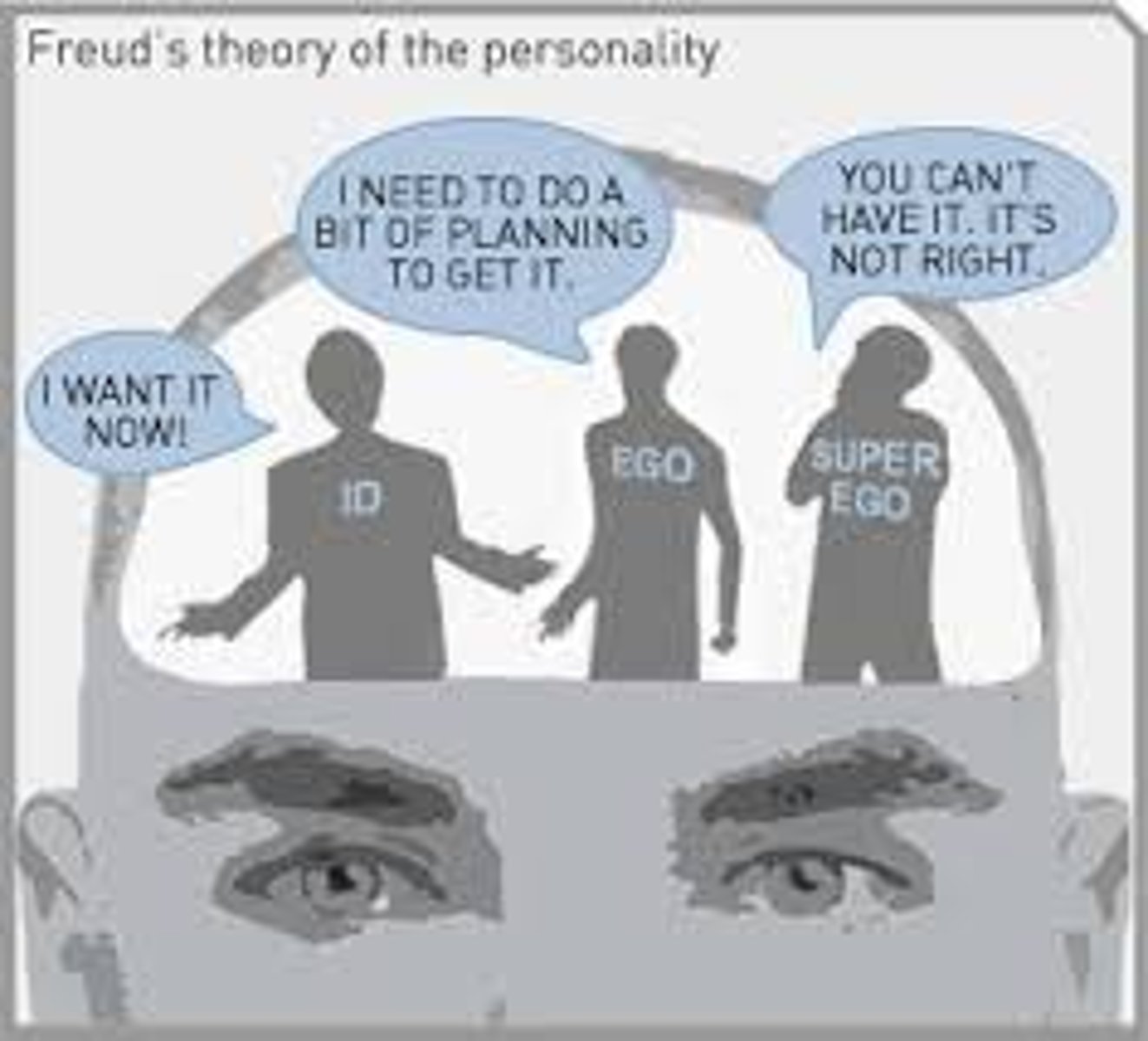
Three Elements of Personality According to Psychoanalytic Theory
1. Id
2. Ego
3. Supergo
Id (Impulsive and Pleasure-Seeking)
Refers to the instincts, or pleasure-seeking drives or impulses. This is present since birth. Also considered as the unconscious state of the mind of a person.
Ego (Rational and Reality-Oriented)
Refers to the self. Its function is to balance or mediate between the id and superego in the context of reality.
Superego (Moral Compass)
Refers to conscience. It sets the moral standard in consonance with the norms of the society. It is developed at the age of five.
Types of Personality Conflicts or Anxiety
1. Realistic Anxiety
2. Moral Anxiety
3. Neurotic Anxiety
Realistic Anxiety
This refers to the feeling of fear towards certain external object, situation, or action, that society generally regard as a threat or dangerous to the concerned person. It is what a person feels when a criminal points the muzzle of his firearm towards him.
Moral Anxiety
Produced by the tensions between the ego and the superego. In certain times, the id provokes the ego to resort in unacceptable behaviors causing the superego to regulate the former.
Neurotic Anxiety
This is produced by the conflict between the id and the ego. This is felt when the impulses of the id overwhelms the ego. Frustration displacement, losing your temper, and drinking alcohol.
Ego Defense Mechanisms (DR. DRIPIRRS)
D- Denial
R- Repression
D- Displacement
R- Reaction Formation
I- Introjection
P- Projection
I- Isolation or Intellectualization
R- Regression
R- Rationalization
S- Sublimation
Denial
This refers to the refusal on the person to accept the reality.
Repression
The most fundamental defense mechanism. It is referred to as "motivated forgetting"
Displacement
The exact opposite of sublimation. In here the person channels the pain in a socially unacceptable way.
Reaction Formation
This is often called "believing the opposite". A primitive version of sublimation, this ego defense mechanism changes the anxiety-provoking or unacceptable impulses into acceptable ones. However, unlike sublimation, reaction formation, reverses the individual's conscious experience making him aware of the opposite feeling.
(Behaving in a way opposite to one's true feelings.)

Introjection
The individual imitates the characteristics of another to gain acceptance.

Projection
The ego attempts to resolve the tension or discomfort of the individual by attributing the undesirable thoughts, events, feelings, and motives to another individual. It resembles with the act of blaming.
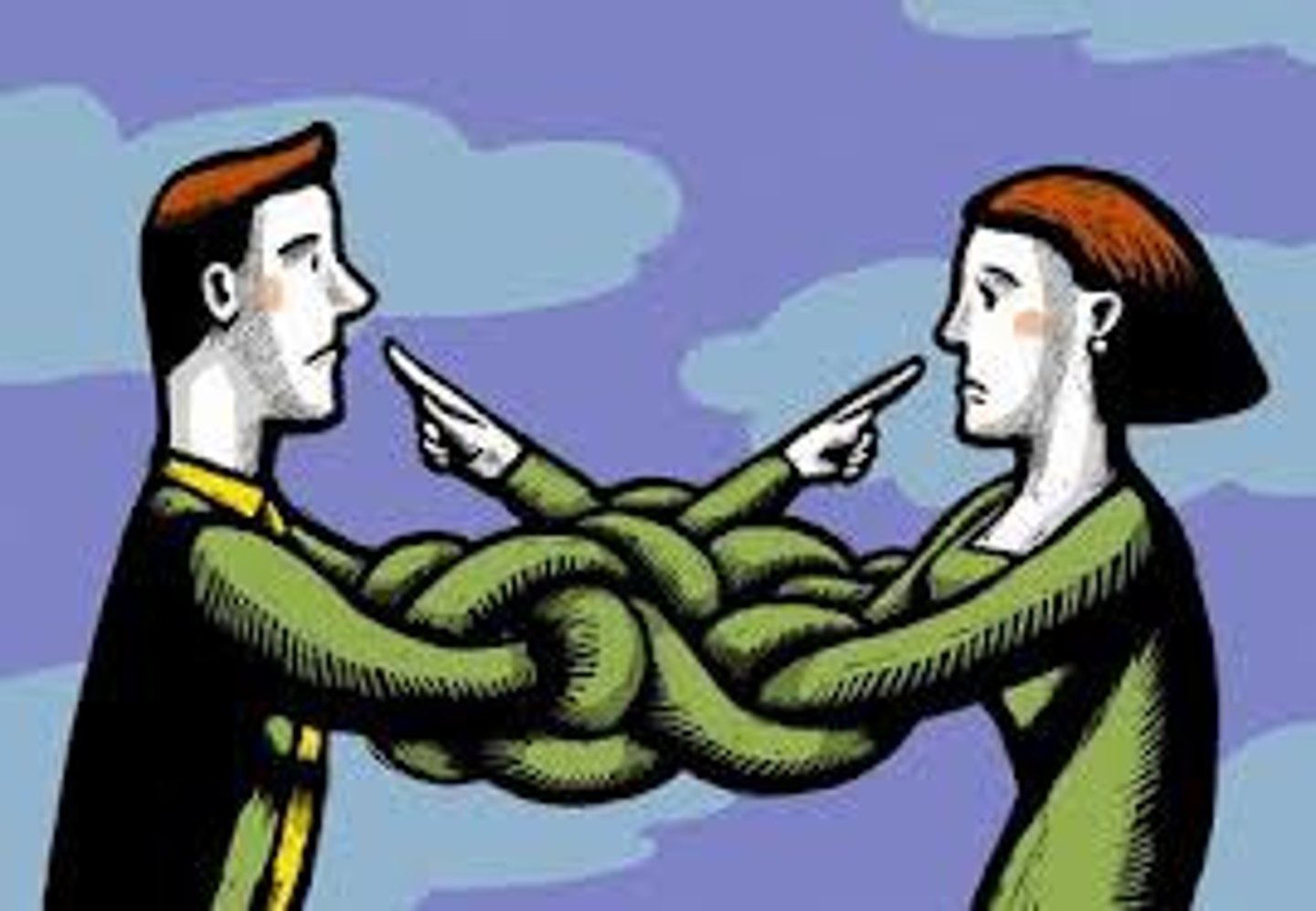
Isolation or Intellectualization
Eliminates the feeling or emotion associated with a threatening event, object, or person. The strategy is to become emotionless to pursue normal psychological function.
Regression
A defense mechanism of ego in which the person reverts or moves backward in the earlier stages of development in order to cope with negative emotions.
Rationalization
A defense mechanism where the ego excuses an inappropriate behavior through a gesture that is more acceptable than the real and unconscious motive.

Sublimation
This is the most mature defense mechanism which involves channeling the stress or pain through socially acceptable behavior.
Fixation
Refers to either inadequate or excessive pleasure, or to the conflicts during the stages of psychosexual development in which the target of the sexual energy remains attached to an object associated with lower level of maturity.
Stages of Psychosexual Development
1. Oral Stage
2. Anal Stage
3. Phallic Stage
4. Latency Stage
5. Genital Stage

Oral Stage (birth to 2 years)
In this stage of psychosexual development, the gratification of the infant focuses on the mouth. Oral activities like eating, swallowing, biting and sucking give pleasure.
Anal Stage (2 to 4 years)
Develops during toilet training; libido is focused on controlling waste and expelling waste; a person fixated may become overly controlling (retentive) or out of control (expulsive).
Phallic Stage (4-5 years)
Sexual attraction to the parent of opposite sex occurs and that parent of the same sex is considered as rival or competitor. Gender identity is learned by identifying and mimicking the same sex parent.

Oedipus Complex
A boy's sexual desires toward his mother and feelings of jealousy and hatred for the rival father.

Electra Complex
A girl's sexual desire for her father and feelings of jealousy and resentment towards her mother.
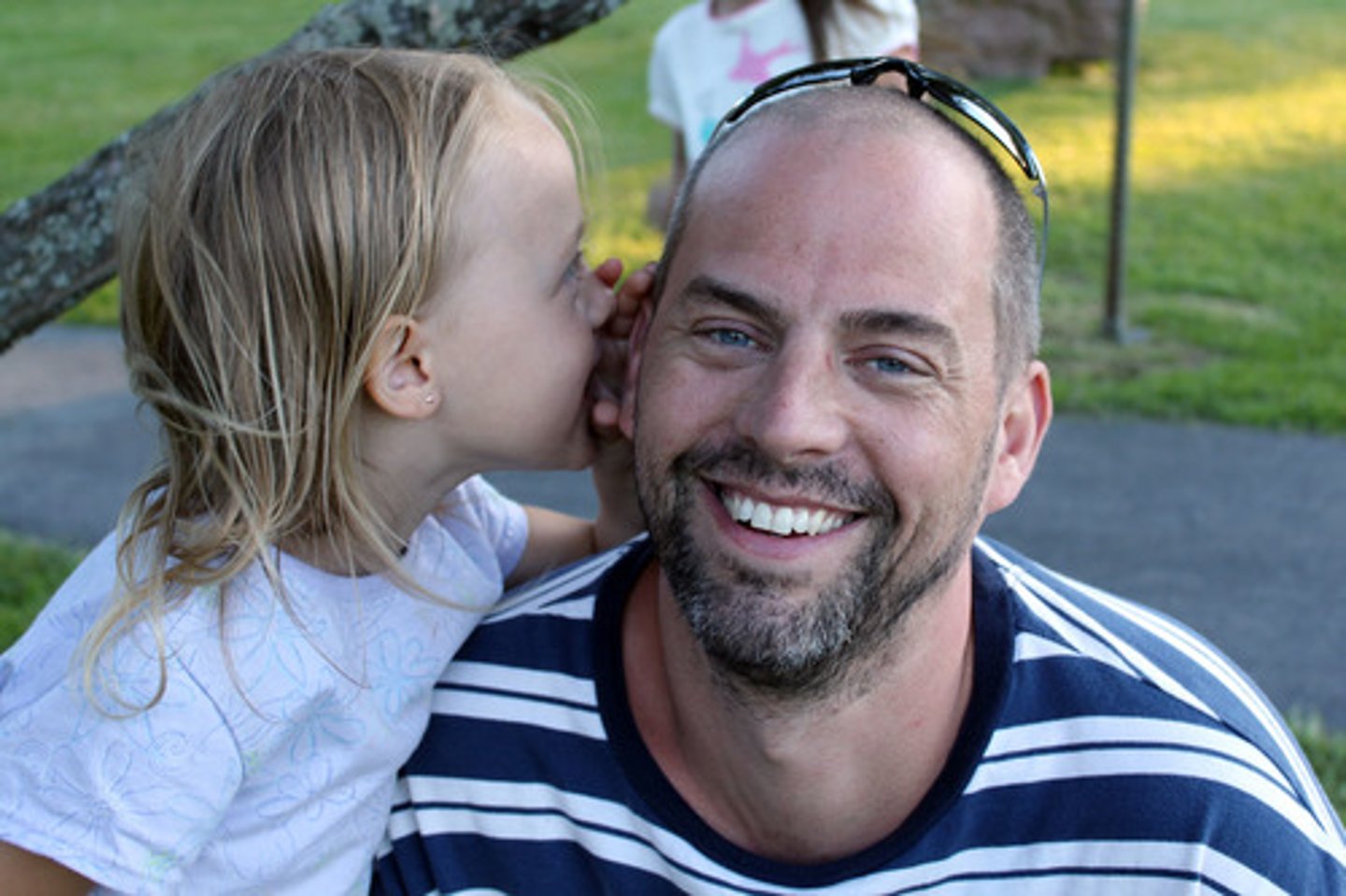
Castration Anxiety
In psychoanalysis, the fear in young boys that they will be mutilated genitally because of their lust for their mothers.
Latency Stage (6 years to puberty)
In this stage, the child realizes that desires and affections directed to the parent of opposite sex are not feasible. The child shifts his focus towards social skills such as recreation and sports and becomes occupied with socializing with same-sex peers, refining roles, personal relationships, and sexual identity.
Genital Stage (Puberty and up)
This stage commences when the child enters the period of puberty- a stage where the little girl or boy transitioned into adolescence becoming into a sexually matured and a reproductive ready individual. In this stage, there is an increase of sex hormones resulting to an increase of sexual desire with the opposite sex.
Self Control Theory (General Theory of Crime)
This theory argues that person with high level of self control are less likely to commit crime while those who have inadequate self control are more likely to engage in criminal acts.
Frustration-Aggression Theory
Which arises from being blocked from achieving a goal, can lead to aggression. When a person is prevented from reaching a desired goal, they experience frustration, which can build up and eventually lead to aggressive behavior.
Moral Development Theory
A theory which states that morality progress through a series of stages. The sense of right or wrong is entwined with the person' progression to the stages. Delinquent behavior is a result of immaturity in moral development.
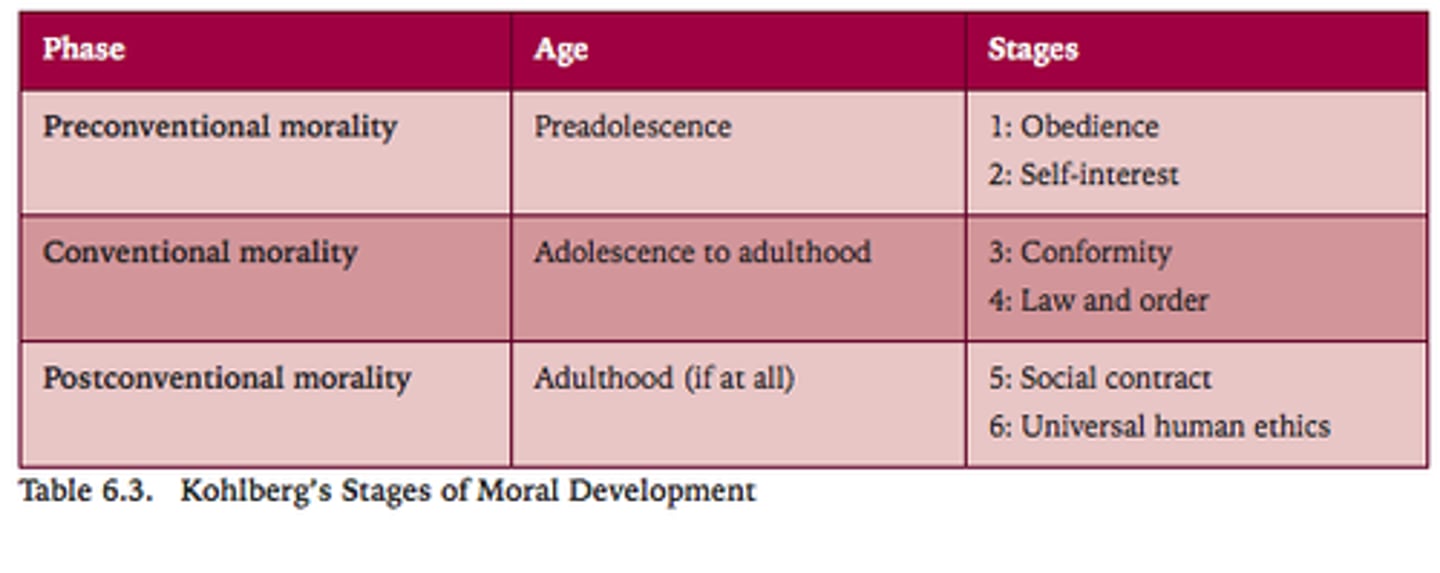
Pre-Conventional Morality
First level of Kohlberg's stages of moral development in which the child's behavior is governed by the consequences of the behavior.
Conventional Morality
Second level of Kohlberg's stages of moral development in which the child's behavior is governed by conforming to the society's norms of behavior.
Post-Conventional Morality
Moral actions is based on the established principles of the person and moral reasoning is directed towards justice.
Pre-conventional Morality (Child)
Stage 1: Obedience of the law to avoid punishment
Stage 2: Self-interest and sometimes to the interest of others
Conventional Morality (Adolescence)
Stage 3: Adapt a group and act in consonance with its culture
Stage 4: Law and order orientation
Post-Conventional Morality (Adult)
Stage 5: Laws are believed to benefit the greatest number of people
Stage 6: Universal ethical consideration
Rational Choice Theory
Assumes that people make rational decisions or choices if they think that such actions is perceived to maximize benefits and minimize losses, risks or costs.
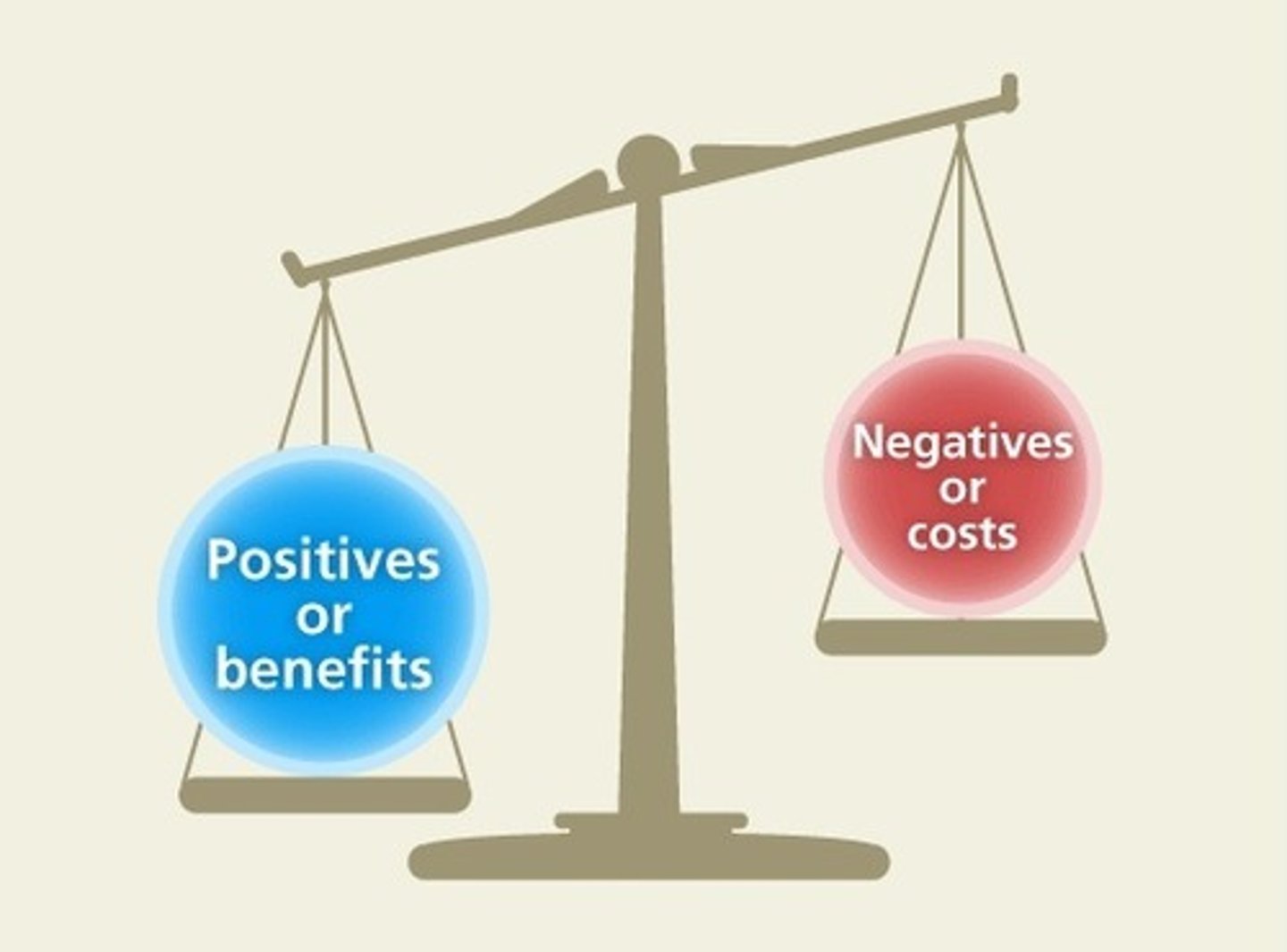
Low IQ Theory
The earliest proponent of this theory was Charles Goring who after studying the mental characteristics of 3,000 convicts, argued that crime is not caused by atavistic feature of man but by defective intelligence which is hereditary in nature.
Personality Trait Theory
Posits that antisocial behavior comes mainly from personality.
Levels of Traits
1. Cardinal Traits
2. Central Traits
3. Secondary Traits
Cardinal Traits
These are dominant traits that shape a person's entire life. They are rare and tend to define an individual to such an extent that they become synonymous with their personality. Examples include terms like "Machiavellian," "narcissistic," or "Don Juan."
Central Traits
These are common traits that make up our personalities. They are more general and influence behavior in various situations. Examples include kindness, honesty, and friendliness.

Secondary Traits
These are specific traits that are only present under certain conditions and circumstances. For instance, a person might get nervous before public speaking or become impatient when waiting in a long queue.
Eysenck's Personality Theory
Blames criminality to genetically inherited nervous system which behaves in a particular level of physiological arousal or temperament.
Three Dimensions of Personality
1. Extraversion-Introversion: This dimension reflects a person's level of sociability and stimulation-seeking behavior. Extraverts tend to be outgoing, sociable, and enjoy social interaction. Introverts, on the other hand, tend to be more reserved, quiet, and prefer solitary activities.
2. Neuroticism-Stability: This dimension reflects a person's emotional stability. Neurotic individuals tend to be anxious, moody, and vulnerable to stress. Stable individuals tend to be calm, relaxed, and emotionally resilient.
3. Psychoticism: This dimension reflects a person's tendency towards impulsivity, aggression, and a lack of empathy. Individuals high in psychoticism are often seen as cold, callous, and insensitive.

Behavioral Theory
Is a psychological approach that focuses on observable behavior and how it is learned through interaction with the environment. It emphasizes the role of external stimuli and consequences in shaping behavior.
Cognitive Theory
Emphasizes the role of thoughts, perceptions, and beliefs in shaping behavior. It suggests that our thoughts directly influence our feelings and actions. By understanding and modifying our thought patterns, we can change our emotional responses and behaviors.
Cognitive Dissonance Theory
Is a psychological theory that suggests that people experience discomfort when they hold two or more conflicting beliefs, ideas, or values. This discomfort motivates individuals to reduce the dissonance by changing their beliefs, attitudes, or behaviors.
Example: A person who smokes cigarettes, despite knowing the health risks, may experience cognitive dissonance. To reduce this discomfort, they might:
Change their belief: "Smoking isn't that bad for you."
Change their behavior: Quit smoking.
Justify their behavior: "I only smoke when I'm stressed."
Minimize the importance: "I'll quit someday."
Sociological Theories of Crime Causation
1. Differential Association Theory
2. Anomie Theory
3. General Strain Theory
4. Social Bond Theory
5. Containment Theory
6. Interactional Theory
7. Situational Crime Prevention Theory
8. Deterrence Theory
9. Social Learning Theory
10. Labeling Theory
11. Routine Activity Theory
12. Life-Course Theory
13. Social Disorganization Theory
14. Imitation-Suggestion Theory
15. Conflict of Culture Theory
16. Culture Deviance Theory
17. Self-Derogation Theory
Differential Association Theory
Is a sociological theory that suggests that criminal behavior is learned through interaction with others. It posits that individuals learn the techniques and attitudes necessary for criminal behavior through association with those who engage in such behavior.
Anomie Theory
Breakdown of social orders as results of loss of standards and values that replaced social cohesion.